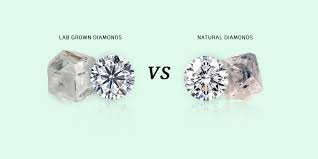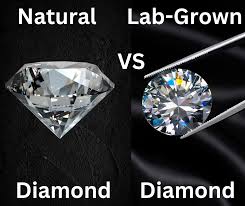
Diamonds have captivated humans for centuries, but today, a technological revolution is reshaping the jewelry market. Lab-grown diamonds—chemically identical to natural diamonds—offer a sustainable and ethical alternative, raising questions about their value, formation, and differences from natural gems.
1. How Natural Diamonds Form
Natural diamonds are formed deep within the Earth’s mantle under extreme heat and pressure over millions to billions of years. Key features include:
- Carbon crystals: Composed purely of carbon atoms arranged in a crystal lattice
- Trace elements: Impurities like nitrogen or boron can influence color
- Geological rarity: The slow formation process and mining limitations make natural diamonds scarce
Natural diamonds often carry historical and geological significance, which contributes to their allure and value.
2. How Lab-Grown Diamonds Are Made
Lab-grown diamonds are produced using two primary methods:
- High Pressure, High Temperature (HPHT): Simulates the natural formation process in a controlled lab environment.
- Chemical Vapor Deposition (CVD): Uses carbon-rich gas to deposit layers of diamond onto a substrate.
These diamonds are chemically, physically, and optically identical to natural diamonds but are created in weeks rather than millennia.
3. Comparing Lab-Grown and Natural Diamonds
- Appearance: Both types are virtually indistinguishable to the naked eye; advanced testing is required to tell them apart.
- Quality: Lab-grown diamonds can have fewer impurities and be more consistently flawless.
- Cost: Lab-grown diamonds are generally 20–40% less expensive than natural ones of equivalent size and quality.
- Environmental impact: Lab-grown diamonds are considered more sustainable, avoiding the ecological damage of traditional mining.
4. Ethical and Market Considerations
- Conflict-free sourcing: Lab-grown diamonds eliminate concerns about “blood diamonds” linked to human rights abuses.
- Consumer perception: Some buyers value the rarity and history of natural diamonds, while others prioritize sustainability and affordability.
- Investment value: Natural diamonds often retain higher resale value due to their scarcity, whereas lab-grown diamonds currently have lower long-term investment potential.
5. The Future of Diamond Technology
Advances in lab-grown diamond production are making them increasingly accessible and diverse, with applications extending beyond jewelry to electronics, medical devices, and high-performance optics. As technology improves, lab-grown diamonds may redefine how we measure value and luxury in the gem market.
Final Thoughts
Lab-grown diamonds are not just an alternative—they are a scientific achievement that combines beauty, sustainability, and innovation. While natural diamonds remain treasured for their rarity, lab-grown diamonds offer ethical, cost-effective, and technologically advanced options for modern consumers.
